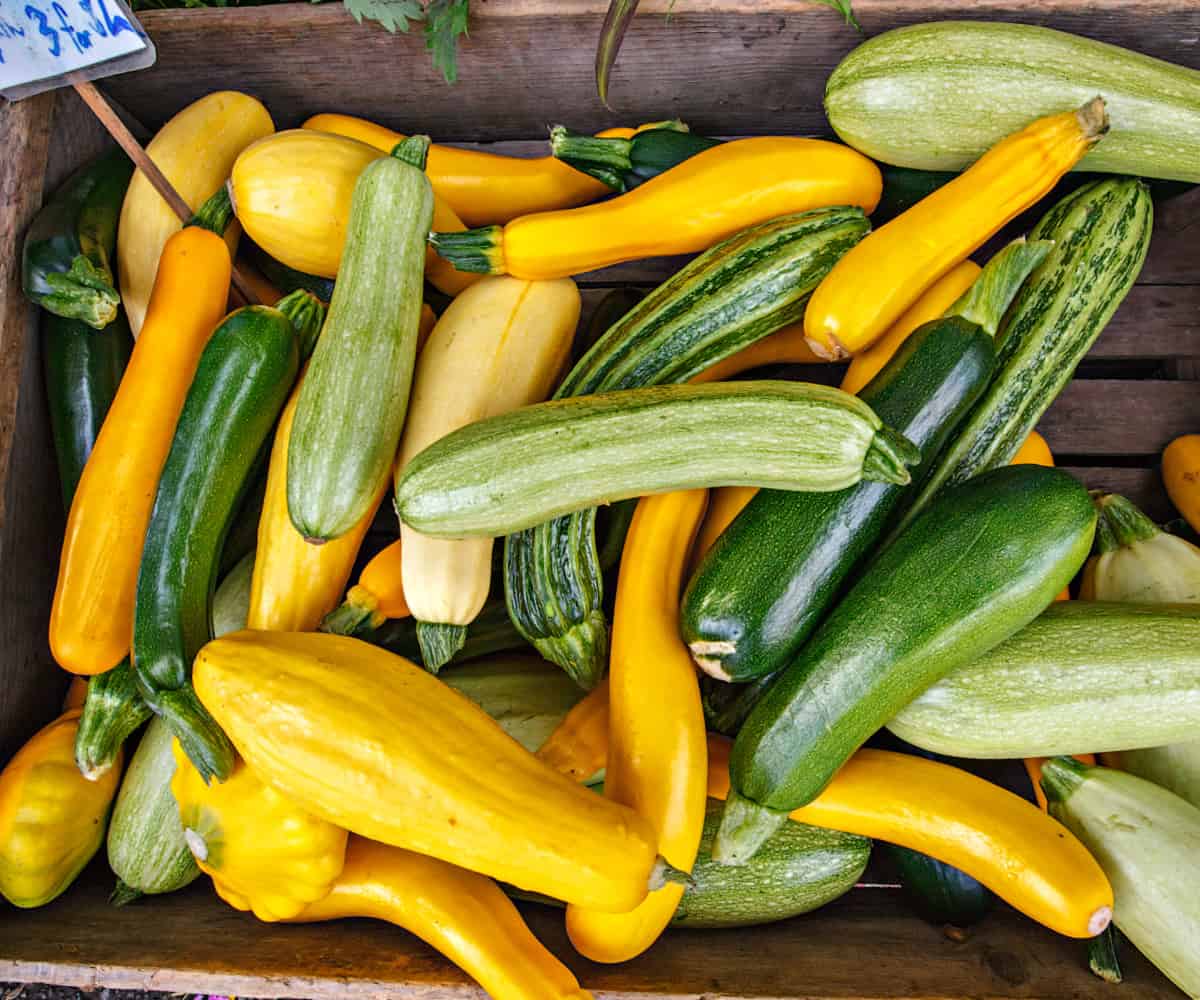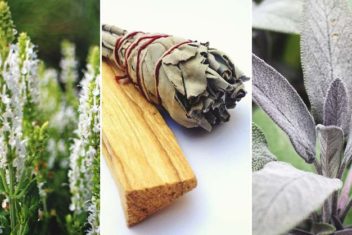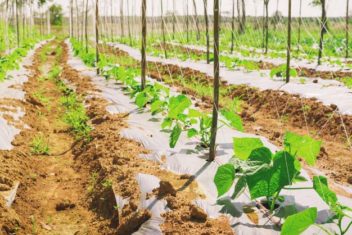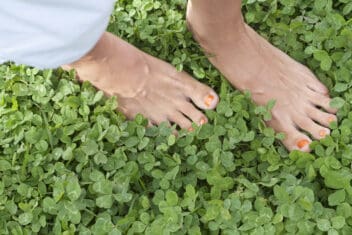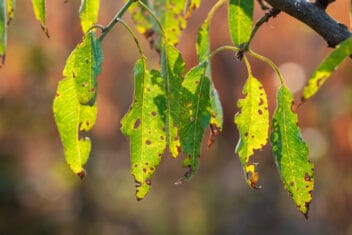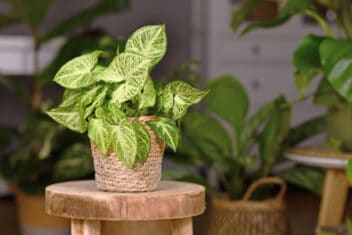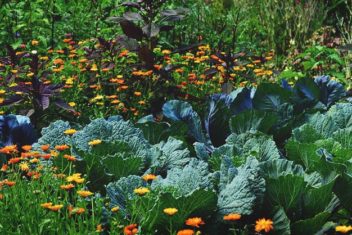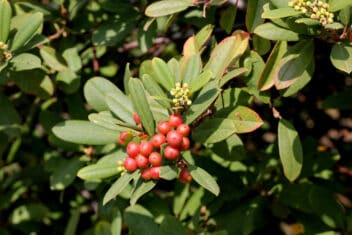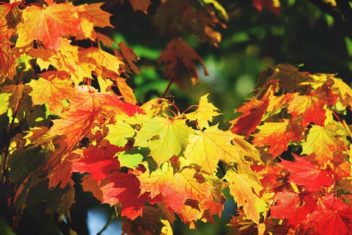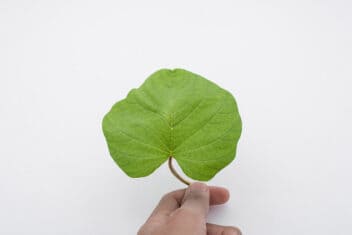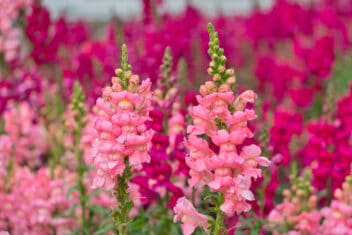One of the things I love about the summer garden is squash harvest time. Summer squash are delicious and versatile, and once the fruits start coming, you’re in for a bounty.
When I first grew summer squash, one thing that confused me was exactly when I should harvest them and how to store them to make them last.
There are some common mistakes people make, so let’s dig in so you can start enjoying the fruits of your labors.
Types of Summer Squash
So, you’ve grown a wonderful crop of summer squash. How do you know if it’s time to harvest? Is it too soon? Can you let the plants grow larger? What if you want to save seeds to plant next year?
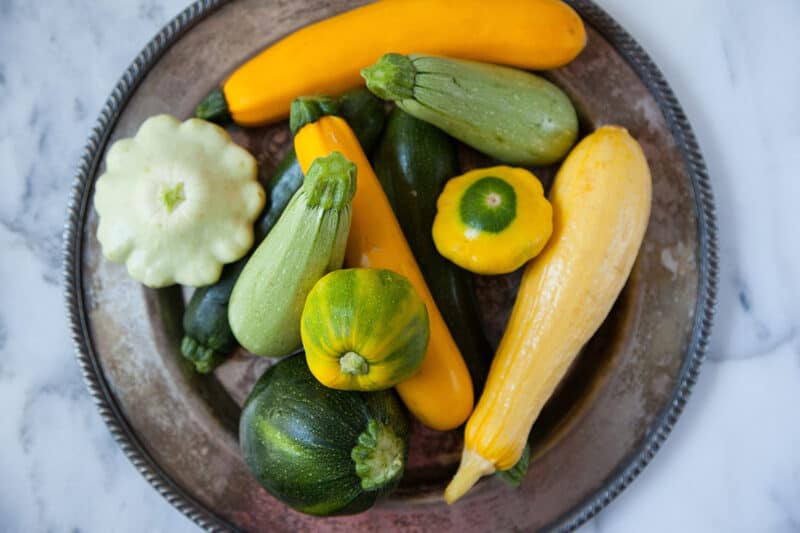
It may seem obvious, but first things first. You need to be certain that you’re growing summer squash in order to figure out when to harvest. There are also winter squashes, which are harvested at a different time of year.
These are common summer varieties:
- Cousa
- Crookneck
- Patty pan
- Straight neck
- Zucchini
- Tatume
- Zephyr
- Ronde de Nice
- Tinda
Winter squash varieties include acorn, butternut, Hubbard, delicata, pumpkin, and spaghetti.
Not sure what you planted? Remember that winter squash is generally harvested when the skin is hard, while summer squash is harvested when the skin is soft and immature.
When to Harvest Summer Squash
Most gardeners make this one mistake when they first grow summer squash. They let them grow too big.
It’s a common misconception that if you let squash grow big, you will get to enjoy more of the vegetable. Unfortunately, that’s not the case. If you let them grow too big, they become tasteless or woody.
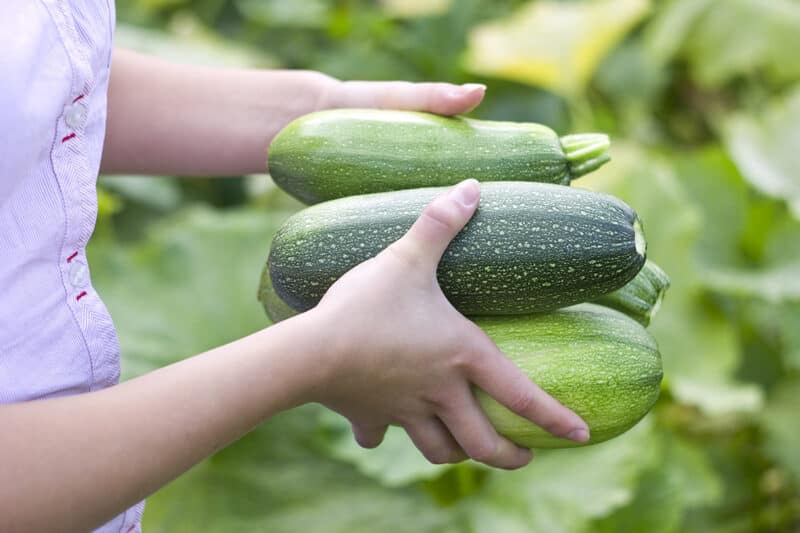
If you’ve ever accidentally let a zucchini fruit get too large, you know exactly how much flavor they lose.
When to Pick the Fruits
My simple rule of thumb is: a small squash is a yummy squash. You want to err on the side of harvesting too small over too large. So how do you know?
The best way to be sure is to check the maturity date for the variety that you’re growing. This can vary among types. For instance, zucchini can mature anywhere between 30-60 days, depending on whether its an early maturing variety or not.
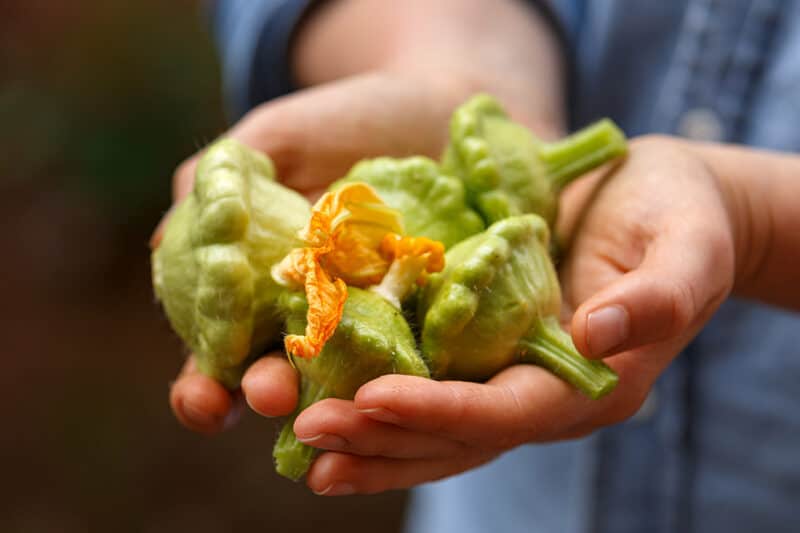
Not sure what type you have? Here are some general guidelines.
- For long varieties of small squash like regular zucchini, the length shouldn’t exceed 8 inches and the diameter no more than 2 inches.
- For small scallop varieties like pattypan, about 4 inches in diameter is the maximum I allow. I let one grow to the size of a dinner plate and it was horrible.
- Crookneck squash should be harvested between 4 and 7 inches. A little longer is okay, but avoid letting them grow too much larger.
Remember that this is just a rule of thumb. If you aren’t sure, pick a small squash and taste it. Is it tender and delicious? Then it’s the right size.
My method for deciding on when to pick the larger, round summer squash like cousa, is simple. Once the skin becomes glossy but still soft enough for me to pierce with my thumbnail, it’s ready.
I do the same for round zucchini.
If you’ve ever grown summer squash, you’ll know that there is always one or two that hide and grow to big proportions. They’re still fine to use as puree and as flavorings for soup. Don’t feel you have to throw them away.
Sometimes I’ll cut them in half and let the chickens eat them.
Check your summer squash plants every other day when the fruits are getting close to the right size. A zuke can grow 2 inches in one day.
When to Harvest Blooms
If you want to eat the delicious squash blossoms, you need to get the timing right. You should to harvest them in the morning before they open while they’re still in bud form.
How to Harvest Summer Squash From the Plant
It’s important to remove your summer squash carefully so you don’t damage the plant or the squash. If you accidentally damage the skin, you will need to use that squash straight away. Follow these basic tips:
- Use a sharp knife or pruner.
- Lift and hold the summer squash to take the weight.
- Cut the stem, leaving about an inch on the squash.
How to Harvest Blossoms
Summer squash blooms are a lovely treat, but you need to harvest them carefully to avoid preventing fruits from forming.
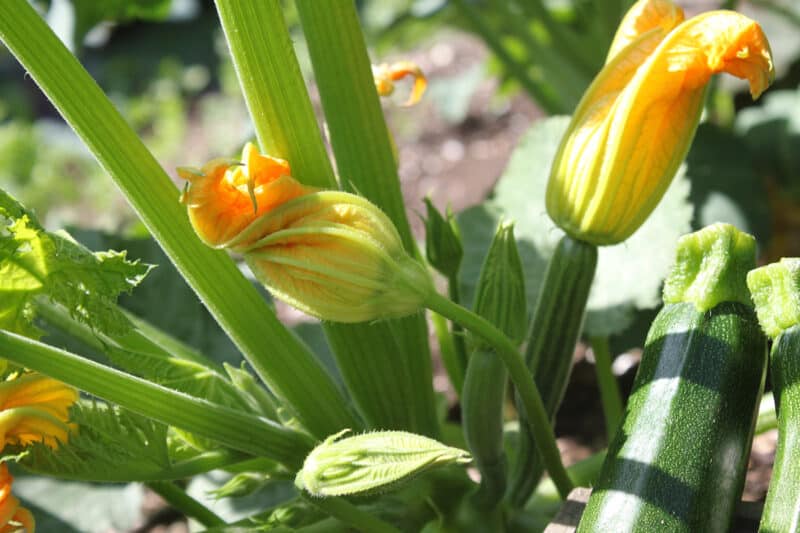
Only harvest the male flowers. You can see the difference between the female and male blooms. The male flowers have thinner stems. Female flowers have thicker stems with a little bulb at the bottom where the squash forms.
Don’t take all of the plant blossoms, or the female blooms won’t get pollinated and you won’t get fruits.
Harvesting Seeds
Make sure you harvest the seeds of your squash to plant again, especially if they’re heirloom.
Let a few squashes get a little overripe toward the end of the growing season and cut them open. Scoop out the seeds and place them in a bowl and fill it with water.
Wash the pulp off the seeds and place them on a paper towel to dry. Store in a paper envelope until you intend to plant them.
How to Store Summer Squash
Summer squash doesn’t store well, so you should use them within a week of taking them off the plant. Don’t despair though, because they do freeze and pickle well, so you can still enjoy them year-round.
Squash gardeners know that once the harvest starts coming, it’s hard to use it all up. That’s why knowing how to store squash is important.
Store in the refrigerator
- Wipe the squash gently with a moist cloth. Allow them to dry.
- Place in a perforated plastic bag. Pierce a few holes in a plastic bag if you don’t have a vegetable-specific bag. This helps maintain the right humidity.
- Don’t store for longer than 7 days. Any longer than this and you will notice the skin start to wrinkle.
- Don’t store summer squash below 50ºF. This will cause rapid decay.
Freeze Summer Squash
This is my favorite way to preserve summer squash. It’s easy and quick and works for all squash. You can even combine different varieties in one bag for a squash mix. Of course, you can also sort them into varieties and freeze them separately.
- Wash your summer squash and dry with a paper towel.
- Cut into rounds at about 1/2 an inch thick.
- Blanch in boiling water or steam the rounds for 3 to 4 minutes. We’re trying to destroy the bacteria that would make the squash deteriorate over time, even if frozen.
- When the squash is fork-tender, remove and plunge into a big bowl of ice water to stop the cooking process instantly.
- Drain and let the fruit dry. If the squash is too wet when you freeze it, it will be like a block of ice with squash inside.
- Place the squash in plastic bags and place them in the freezer. Use bags that hold what you consider one serving of squash. It can be a little problematic to break up solid blocks when you need them. Freezing one serving size means you can defrost exactly what you need.
- Use a vacuum machine or the straw method to remove the air from the bag. Get as much air out as possible from the bag and seal it completely except for a small space where you have a straw sticking out.
Use the squash in sautés, soups, casseroles, breads, pasta sauces or just as a side dish.
Grate Squash for Storage
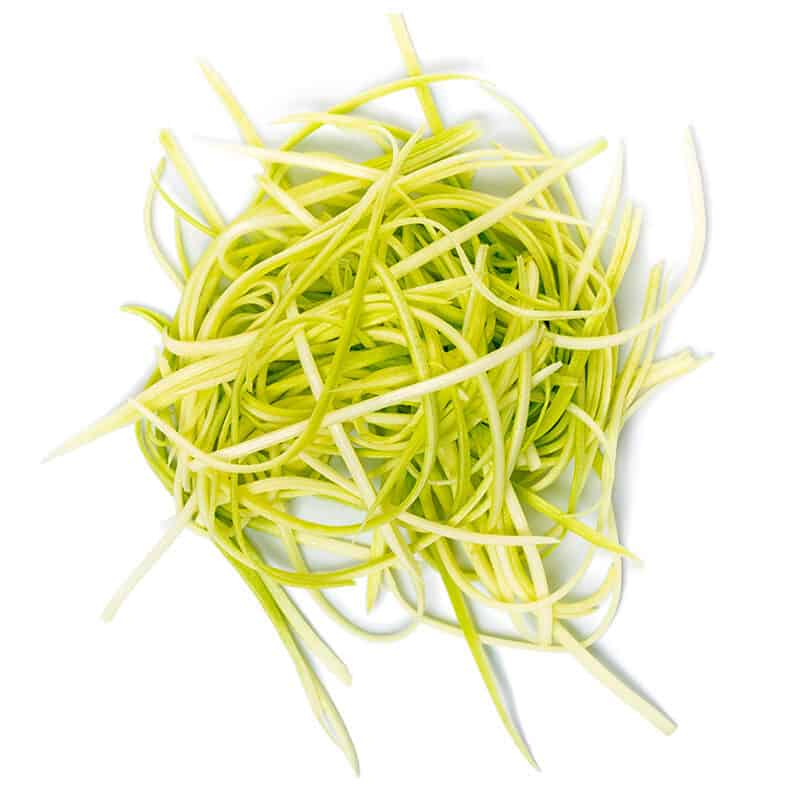
I freeze summer squash by grating it and placing it in plastic bags to freeze. I don’t blanch the grated squash, but you can if you’d like.
Grated squash is perfect in bread, cakes or fritters.
Pickling and Fermenting
Summer squash pickles well, or you can use it to make chutneys, savory jams, or you could even try fermenting some of your harvest.
